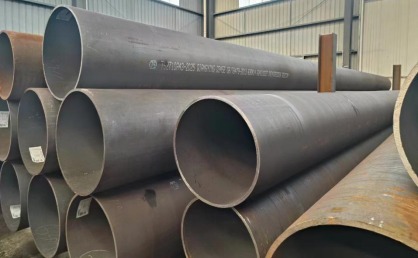Carbon steel is an essential material in various industries, valued for its strength, durability, and versatility. Understanding the different grades of carbon steel is crucial for selecting the right material for your project. Always work with reputable carbon steel suppliers to ensure you receive high-quality materials tailored to your needs. This comprehensive guide will delve into the various carbon steel grades, their properties, and applications.
What is Carbon Steel?
Carbon steel is a type of steel where the main interstitial alloying constituent is carbon. The American Iron and Steel Institute (AISI) defines carbon steel as follows:
- Low Carbon Steel: Contains up to 0.25% carbon.
- Medium Carbon Steel: Contains 0.25% to 0.60% carbon.
- High Carbon Steel: Contains 0.60% to 1.25% carbon.
- Ultra-High Carbon Steel: Contains 1.25% to 2.0% carbon.
Low Carbon Steel (Mild Steel)
Properties:
- Low strength but highly ductile and malleable.
- Excellent weldability and machinability.
- Often used in the manufacturing of various structural shapes and sheets.
Applications:
- Construction materials such as beams and bars.
- Auto body components.
- Pipes and tubes.
Medium Carbon Steel
Properties:
- Balanced between strength and ductility.
- Can be heat-treated to improve hardness and strength.
- Moderate machinability and weldability.
Applications:
- Machinery parts.
- Automotive components such as gears and crankshafts.
- Railway tracks.
High Carbon Steel
Properties:
- High strength and hardness but lower ductility.
- Can be hardened further through heat treatment.
- More challenging to weld and machine due to increased brittleness.
Applications:
- Cutting tools and drill bits.
- Springs and high-strength wires.
- Knives and blades.
Ultra-High Carbon Steel
Properties:
- Extremely hard and strong, very low ductility.
- Can be heat treated to achieve the highest hardness.
- Typically used in specialized applications.
Applications:
- Tool steels for forming and cutting.
- Axes and high-strength components.
- Industrial knives and punches.
Selecting the Right Carbon Steel Grade
Choosing the appropriate grade of carbon steel depends on the specific requirements of your project. Factors to consider include the required strength, hardness, ductility, and weldability. Consulting with experienced metal suppliers can help you determine the best grade for your application.
Conclusion
Carbon steel grades offer a wide range of mechanical properties and applications. From low carbon steel’s excellent ductility to ultra-high carbon steel’s exceptional hardness, understanding these grades is essential for selecting the right material.

